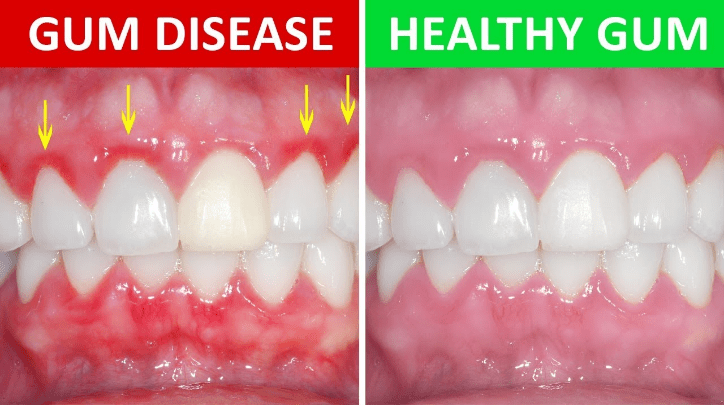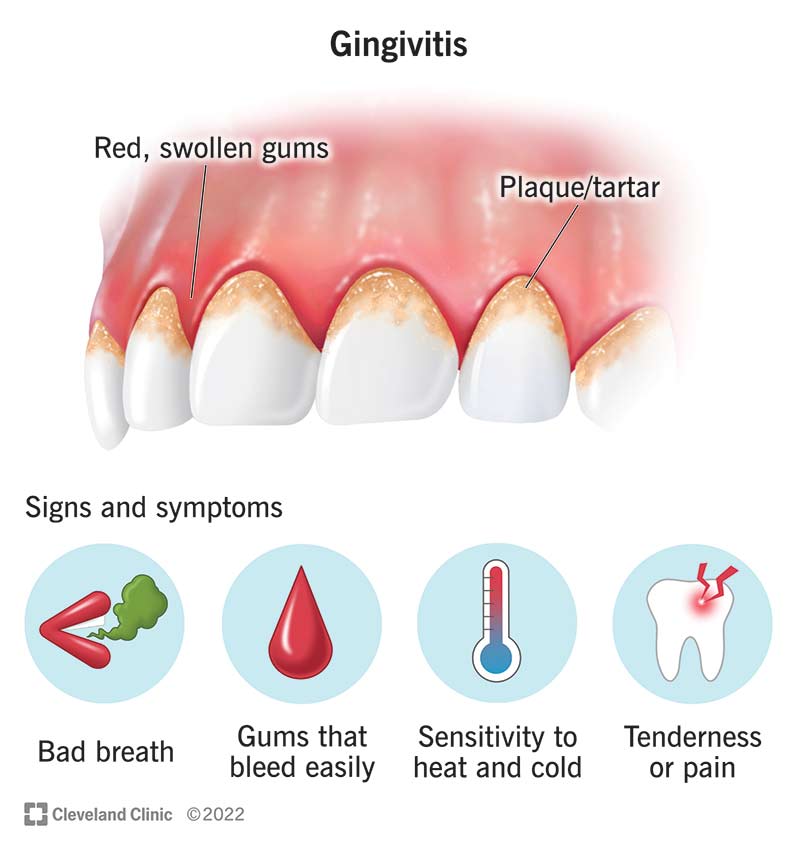Understanding the Stages of Gum Disease

By: Lana Alter
Gum disease, or periodontal disease, is a common yet serious oral health condition that can lead to tooth loss and other complications if left untreated. Understanding the different stages of gum disease is crucial in preventing its progression and protecting your oral health. This article explores the four stages of gum disease, from the earliest stage (gingivitis) to advanced periodontal disease, and discusses the available treatments for each stage.
Stage 1: Gingivitis
What is Gingivitis? Gingivitis is the earliest and most common stage of gum disease. It is caused by the buildup of plaque, a sticky film of bacteria that forms on your teeth. If plaque is not removed through regular brushing and flossing, it can irritate your gums, causing them to become red, swollen, and bleed easily—especially when brushing or flossing.

Symptoms of Gingivitis:
- Red, swollen, or tender gums
- Bleeding gums, particularly when brushing or flossing
- Bad breath (halitosis)
Treatment for Gingivitis: The good news is that gingivitis is completely reversible with proper care. The best treatment involves:
- Improved oral hygiene: Brushing at least twice a day and flossing daily.
- Regular dental cleanings: Professional cleanings help remove plaque and tartar that can’t be reached with regular brushing and flossing.
- Routine dental check-ups: Regular exams allow your dentist to catch gum disease early and prevent it from progressing.
Source: American Dental Association – Gingivitis
Stage 2: Early Periodontal Disease (Mild Periodontitis)
What is Early Periodontal Disease? If gingivitis is left untreated, it can progress into early periodontal disease, also known as mild periodontitis. During this stage, the bacteria in the plaque begin to infect the gums and cause them to pull away from the teeth, creating small pockets between the gums and teeth. These pockets can harbor bacteria, making it difficult to clean them with regular brushing.
Symptoms of Early Periodontal Disease:
- Gums that are inflamed and receding
- Pockets forming between teeth and gums
- Persistent bad breath or a bad taste in the mouth
- Minor tooth sensitivity
Treatment for Early Periodontal Disease: The primary treatment for early periodontal disease is scaling and root planing (also known as deep cleaning). This procedure removes plaque and tartar from below the gumline and smooths the root surfaces to prevent bacteria from reattaching. Additionally, improving at-home oral care and attending more frequent dental check-ups can help prevent the disease from progressing.
Source: National Institute of Dental and Craniofacial Research – Periodontal Disease
Stage 3: Moderate Periodontal Disease
What is Moderate Periodontal Disease? As periodontal disease advances, it reaches the moderate stage, where the infection begins to affect the deeper layers of the gums and the bone supporting the teeth. This stage is characterized by increased inflammation, gum recession, and noticeable pockets around the teeth.
Symptoms of Moderate Periodontal Disease:
- Swollen, bleeding gums
- Gums pulling away from teeth (receding)
- Increased tooth sensitivity
- Loose teeth
- Pus or discharge around the gums
- Pain when chewing
Treatment for Moderate Periodontal Disease: In addition to scaling and root planing, pocket reduction surgery may be required for patients with moderate periodontal disease. This procedure involves lifting the gums to clean deeper areas and then repositioning the gums around the teeth. In some cases, bone grafting or soft tissue grafting may be necessary to repair any damage to the gums or bone.
Source: American Academy of Periodontology – Treatment of Periodontal Disease
Stage 4: Advanced Periodontal Disease
What is Advanced Periodontal Disease? Advanced periodontal disease is the most severe stage of gum disease and can cause significant damage to your gums, teeth, and supporting bone. At this stage, the infection is widespread, and the risk of tooth loss is high. The damage to the bone is often irreversible, but with proper treatment, it’s possible to manage the disease and maintain oral health.

Symptoms of Advanced Periodontal Disease:
- Severe gum recession
- Extensive bleeding and swelling
- Pus or infection around the teeth
- Significant tooth mobility (teeth feel loose)
- Severe bad breath
- Loss of teeth
- Bone loss visible on X-rays
Treatment for Advanced Periodontal Disease: Treatment for advanced periodontal disease often requires a combination of therapies, including:
- Scaling and root planing to remove infection beneath the gumline
- Antibiotics to reduce bacterial infection
- Surgical procedures like pocket reduction surgery, bone grafting, or tissue grafting to repair damage and prevent further bone loss.
- Tooth replacement options such as implants, bridges, or dentures may be considered if teeth are lost.
Source: Mayo Clinic – Periodontal Disease
Preventing Gum Disease: The Key to Healthy Gums
While gum disease is treatable, the best approach is prevention. Practicing good oral hygiene and scheduling regular dental visits are crucial in avoiding the development and progression of gum disease. The following tips can help you maintain healthy gums:
- Brush your teeth at least twice a day using fluoride toothpaste.
- Floss daily to remove plaque between teeth.
- Use an antibacterial mouthwash to reduce bacteria in the mouth.
- Avoid tobacco products, which increase the risk of gum disease.
- Visit your dentist regularly for check-ups and professional cleanings.
Source: Centers for Disease Control and Prevention – Oral Health
Get Professional Care at Star Dental
If you notice signs of gum disease, it’s essential to seek professional care as soon as possible. At Star Dental, we specialize in diagnosing and treating all stages of gum disease. Our team, led by Dr. Afshar, provides comprehensive periodontal care, including routine cleanings, scaling and root planing, and advanced treatments for severe cases.
Don’t wait for gum disease to progress. Schedule an appointment with Star Dental today to protect your smile and overall health!
References
- American Dental Association – Gingivitis
- National Institute of Dental and Craniofacial Research – Periodontal Disease
- American Academy of Periodontology – Treatment of Periodontal Disease
- Mayo Clinic – Periodontal Disease
- Centers for Disease Control and Prevention – Oral Health



